Remaining as active as possible is critical to maintaining your function when you have a spondyloarthropathy. At Next Step Physio we can advise you on how best to stay active and teach you how to maximize your function and retain as much flexibility as possible.
On your first visit to Next Step Physio your physiotherapist will take a detailed history from you and will ask you information about the symptoms in your spine, as well the symptoms you may experience in any other areas of your body. We will also discuss your goals with regards to physiotherapy treatment. It is important for us to know how physically active you have been in the past and if you have been able to keep up your activity since you have developed symptoms. Your physiotherapist will also want to know if your symptoms follow a pattern, such as being worse in the morning or after periods of inactivity, or if they get better or worse with certain physical activities or during particular seasons or times of the month. Any details you can provide regarding treatments that you have found that decrease your symptoms will also be useful for us when we are developing a plan to maximize your function. It will also be important for us to know which medications you have been taking to manage your symptoms, and how effective you feel these medications are so we can also factor this into our treatment plan for you. If you feel your medications have not been that useful, we will ask you to follow-up with your doctor immediately to discuss this.
At Next Step Physio we believe that in order to help manage your symptoms, you should learn as much as you can about your disease and what you can do to control your symptoms and remain as healthy as possible. For this reason, we will educate you about the spondyloarthropathy process but we will also encourage you to do some research for yourself. Support groups are available online and in many cities where people can come together and help with information and support and can be extremely valuable in managing a chronic disease. Getting advice and guidance from someone who has experience with the disease and can provide tips and pointers for living with the disease on a daily basis can be extremely valuable.
During times where your symptoms flare-up, a series of physiotherapy sessions at Next Step Physio will be useful. During these sessions, your therapist can do several things to ease your symptoms, such as use massage, manual therapy, electrical modalities, as well as ice or heat. If you are willing, some of our physiotherapists may even choose to use acupuncture or a form of dry needling to ease your symptoms. Our therapy, however, will be most useful in managing your acute flare-ups. For longer-term management, we will encourage you to be physically active, partake in some aerobic activity, and will provide you will a specific home exercise program of stretches and strengthening exercises designed to maintain the mobility and strength in both your spine and any other joints that have been affected.
Specifically regarding your spine, maintaining extension and rotation of your entire spine is particularly important, as it is these motions which are most often lost due to the chronic inflammation that occurs with a spondyloarthropathy. Your physiotherapist will show you flexibility exercises to maintain the mobility of your entire spine, and will ask you to do these as part of a regular home program.
Your physiotherapist will also stress the importance of using proper upright posturing as often as possible to maintain the mobility in your spine, and decrease the stress on your other joints. An upright posture will also help to maintain your spine in the most optimal alignment so that if some fusion does occur, your spine is in the most functional position possible.
Maintaining erect spinal posture and flexibility also requires the muscles of your spine to remain strong. Your physiotherapist will focus on teaching you how to activate your core muscles supporting the spine, which increase your stability and work to keep the spine in the upright posture. Strengthening exercise for your back and neck muscles will also be added to your home exercise program to ensure you maintain the strength to oppose the common forward flexed position of the spine.
If your upper spine does start to curve forward as a result of the spondyloarthropathy, you will also lose the ability to reach your arms into their full range of motion overhead. Losing this ability can be very limiting when trying to perform activities of daily living such as combing the back of your hair, or reaching to the top of the refrigerator, and it is extremely limiting if you partake in any overhead sporting activities. For this reason your physiotherapist will also show you home exercises that help maintain your shoulder range of motion particularly up into the overhead position.
A flexed and stiff spine will also affect your capacity to breathe deeply because the space for your lungs is decreased. Deep breathing exercises will be an important part of your home program. These exercises will help to maintain your lung volume as well as help the joints of your ribs and thoracic spine move through their range of motion and maintain their mobility. During aerobic exercise you will naturally take these deep breaths, which is another reason your physiotherapist will encourage you to partake in some aerobic exercise as part of your home program.
Participating in aerobic activity and remaining physically active can be the key to long-term management of spondyloarthropathy symptoms. Your physiotherapist will discuss with you the best aerobic activities to partake in, but as a general rule, low-impact activities such as walking, swimming, or cycling are better for your joints over the long-term. If you have not previously done much aerobic exercise your physiotherapist will discuss an appropriate exercise mode for you to begin. He or she can design your activity program to start out slowly and build up to a moderate amount of exercise which you can maintain. It will be best if you can partake in some form of aerobic activity on most days of the week as well as incorporate your home exercises for flexibility into the majority of the days as well. Being physically active also means doing things such as taking the stairs instead of the elevator, or walking rather than driving if you are able to. Due to the symptoms of spondyloarthropathies flaring up at times, and being less symptomatic at times, it is recommended that to protect your joints, you partake in aerobic exercise when you are not experiencing a flare-up. Some patients will find, however, that low-impact aerobic activity can actually help to ease a flare-up. In these cases, it is obviously recommended to continue your exercise during this time as able.
By following your physiotherapist’s advice on exercise, coming for treatment during times when the symptoms flare-up, as well as seeing your doctor for regular check-ups and medication reviews, most people are able to effectively manage their symptoms of a spondyloarthropathy and live a normal active life.
Portions of this document copyright MMG, LLC.
Next Step Physio provides services for physiotherapy in Edmonton.
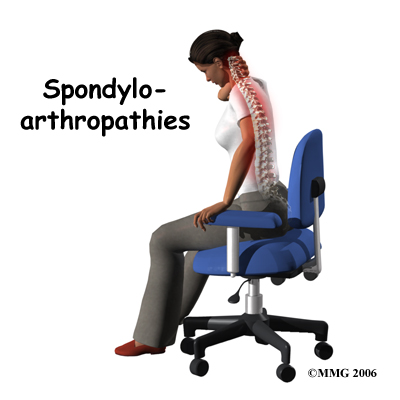



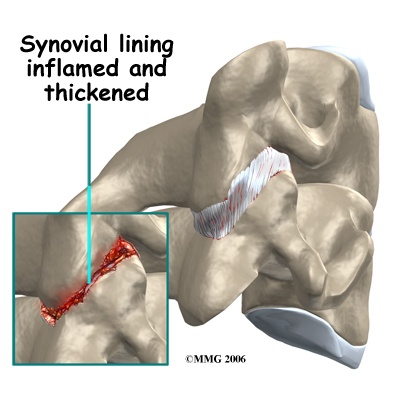 In some rheumatological diseases, the inflammatory process affects other areas of connective tissue such as where ligaments and tendons attach to the bone. This area is called an enthesis. There are entheses located all over the body with many in the spine itself, such as where the intervertebral disc attaches to the vertebra. Many of the rheumatological diseases that affect the spine seem to attack these particular areas of the spine but it is unclear why this occurs.
In some rheumatological diseases, the inflammatory process affects other areas of connective tissue such as where ligaments and tendons attach to the bone. This area is called an enthesis. There are entheses located all over the body with many in the spine itself, such as where the intervertebral disc attaches to the vertebra. Many of the rheumatological diseases that affect the spine seem to attack these particular areas of the spine but it is unclear why this occurs.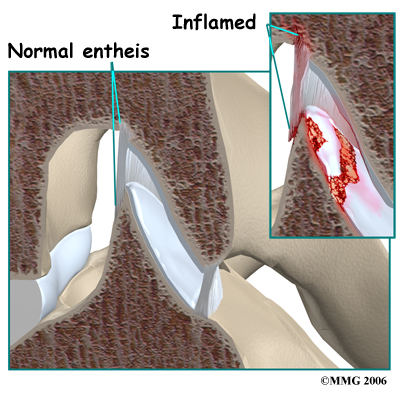
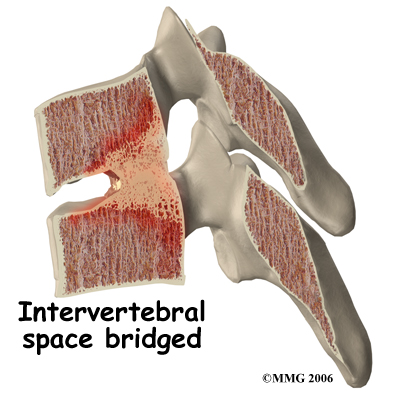
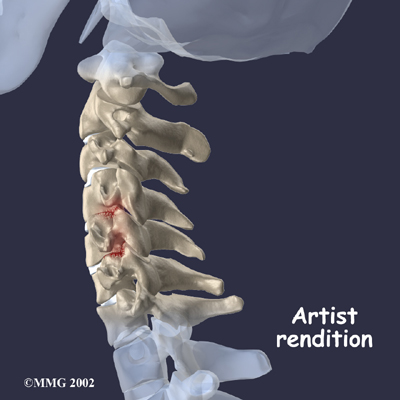

 Non-steroidal anti-inflammatory drugs (NSAIDs) are the main drugs used for treatment of the pain associated with these diseases. These drugs include aspirin, ibuprofen, indomethacin and naprosyn. There are others in the group as well. These drugs reduce the inflammation and control pain. There is no evidence that they stop or slow the progression of the disease.
Non-steroidal anti-inflammatory drugs (NSAIDs) are the main drugs used for treatment of the pain associated with these diseases. These drugs include aspirin, ibuprofen, indomethacin and naprosyn. There are others in the group as well. These drugs reduce the inflammation and control pain. There is no evidence that they stop or slow the progression of the disease.